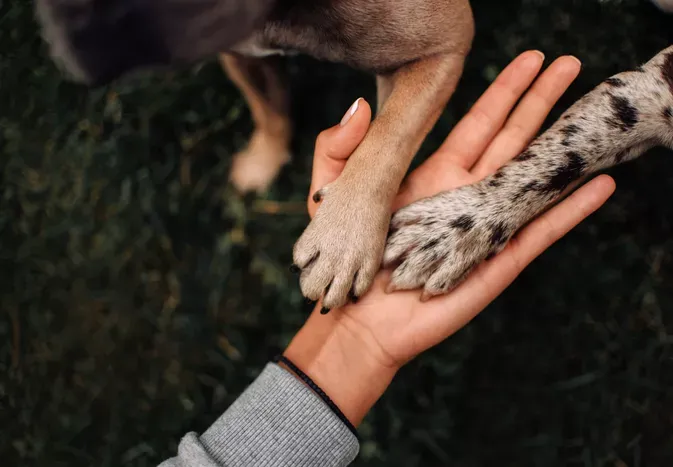Dog Paw Burns
Updated on 05/26/24

Protecting Your Furry Friend's Paws: A Comprehensive Guide to Dog Paw Burns
As dedicated dog owners, we cherish our companions' well-being, ensuring their happiness and health. However, unexpected accidents can occur, and among them, paw burns are a common concern that requires immediate attention. With scorching asphalt, hot pavements, and rugged terrains, our canine friends' delicate paws can suffer burns that cause discomfort, pain, and potential infections.
In this comprehensive guide, we will delve into the causes, symptoms, and effective treatment options for dog paw burns. By understanding the intricacies of this condition, we can equip ourselves as responsible pet owners, safeguarding our furry companions' precious paws and ensuring their speedy recovery.
Understanding the Causes of Dog Paw Burns:
1. Hot Surfaces: During warm seasons, concrete, asphalt, and even sand can absorb sunlight, becoming scorching hot. Prolonged exposure to these surfaces can lead to severe burns on dogs' paws.
2. Contact with Chemicals: Acids, alkalis, and other harsh chemicals can cause chemical burns when they come into contact with a dog's skin. Spills or leaks of these substances should be promptly cleaned to prevent harm.
3. Friction Burns: Running or sliding on rough surfaces, such as gravel or ice, can generate friction that damages the delicate skin on a dog's paws, resulting in burns.
4. Thermal Burns: Exposure to flames, heat sources, or high-temperature objects can cause severe thermal burns that require immediate veterinary attention.
Recognizing the Symptoms of Dog Paw Burns:
- Blisters or open wounds on the paws
- Redness, swelling, and inflammation
- Limping or refusing to walk
- Excessive licking or chewing at the paws
- Discharge or pus coming from the burnt area
- Pain and discomfort
Effective Treatment Options for Dog Paw Burns:
1. Immediate First Aid: If you suspect your dog has a paw burn, take immediate steps to cool the affected area. Submerge the paw in cool water for 10-15 minutes, being gentle and avoiding harsh rubbing.
2. Veterinary Examination: Seek professional veterinary care as soon as possible. The veterinarian will assess the severity of the burn, prescribe pain medication, antibiotics, and provide guidance on wound care.
3. Wound Management: Keep the wound clean and protected to promote healing. Follow the veterinarian's instructions for cleaning and bandaging the paw, and change dressings as directed.
4. Pain Management: Your veterinarian may prescribe pain medication to alleviate discomfort and make the healing process more tolerable for your furry friend.
5. Rest and Rehabilitation: Provide your dog with a comfortable and safe space to rest and recover. Limit their activity and avoid strenuous exercise until the wounds have healed.
Examples of Successful Treatment for Dog Paw Burns:
- Buddy, a lively golden retriever, suffered a burn on his front paw after frolicking on hot asphalt during a summer outing. His owner noticed the burn and immediately applied cool water to the affected area. They then took him to the veterinarian, who prescribed antibiotics and pain medication. With proper wound care and rest, Buddy's paw healed completely within a few weeks.
- Bella, an adventurous shepherd, sustained chemical burns on her paws after encountering a spilled container of cleaning solution. Her owner quickly rinsed her paws with water and brought her to the veterinary clinic. The veterinarian neutralized the chemical burn, prescribed antibiotics, and provided bandaging instructions. With diligent wound management and pain medication, Bella's paws recovered without complications.
Conclusion:
Dog paw burns, while distressing for both pets and owners, can be effectively treated when addressed promptly. By understanding the causes, symptoms, and treatment options, we can provide our canine companions with the necessary care and support during this challenging time. Remember, prevention is always better than cure, so take precautions to protect your dog's paws from potential hazards. By being alert, responsive, and following the guidance of veterinary professionals, we can ensure that our beloved furry friends regain their playful and energetic selves, leaving paw burns as a distant memory.
Explore More Pets

Basic Training
Puppy and Baby Introductions

Working Dog Breeds
All About Search and Rescue Dogs

Dog Treatments
Puppy Vaginitis: Signs, Causes and Treatment

Dog Adoption
After More Than 1,200 Days in the Shelter, Coco Goes Home

Basic Training
How to Train Your Puppy to Go on Potty Pads

Hybrid Dog Breeds
The Difference Between a Mutt, Mixed Breed, or Designer Dog?

Dog Treatments
Nail Problems in Dogs

Puppies
7 Reasons Why Two Dogs Are Better Than One
